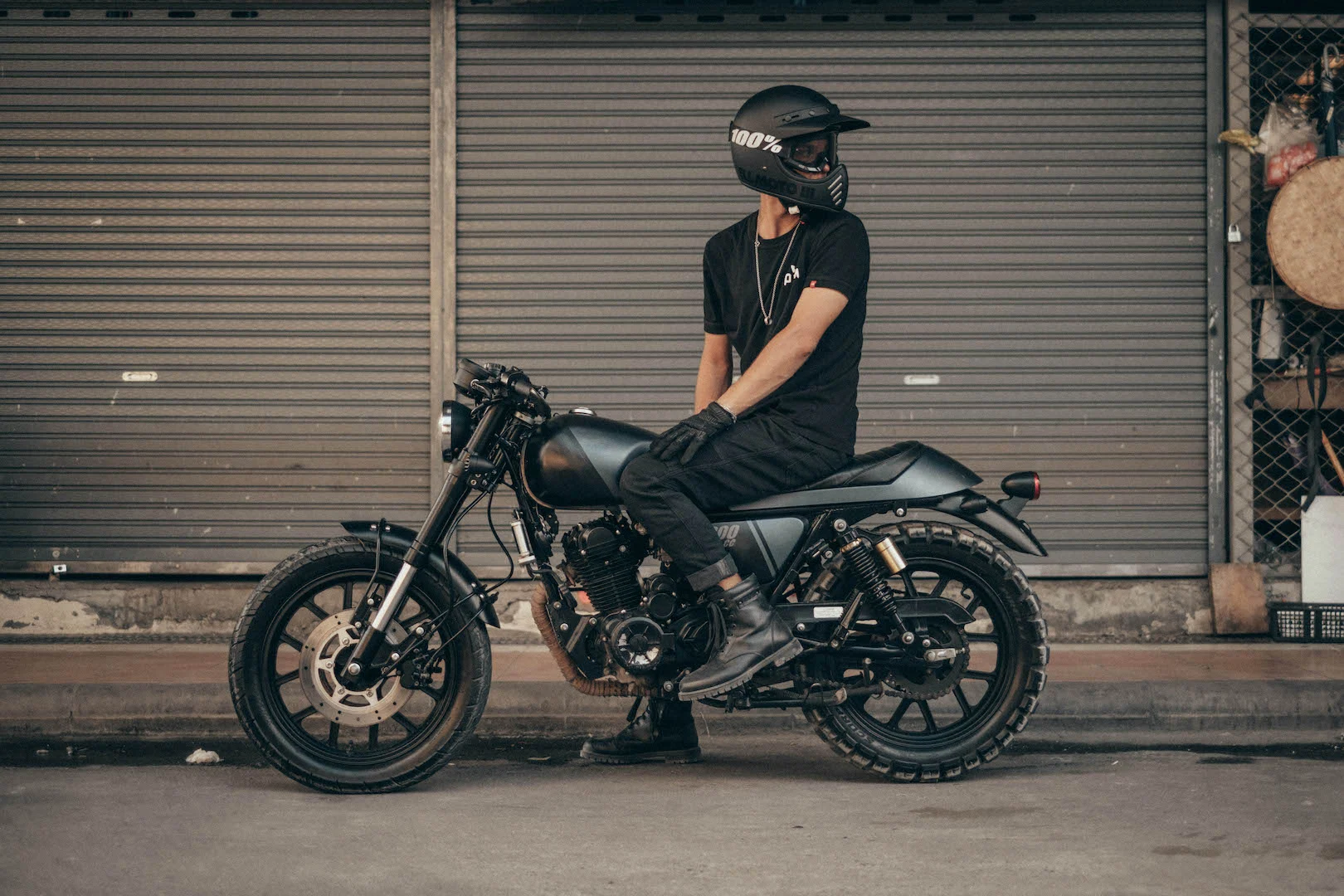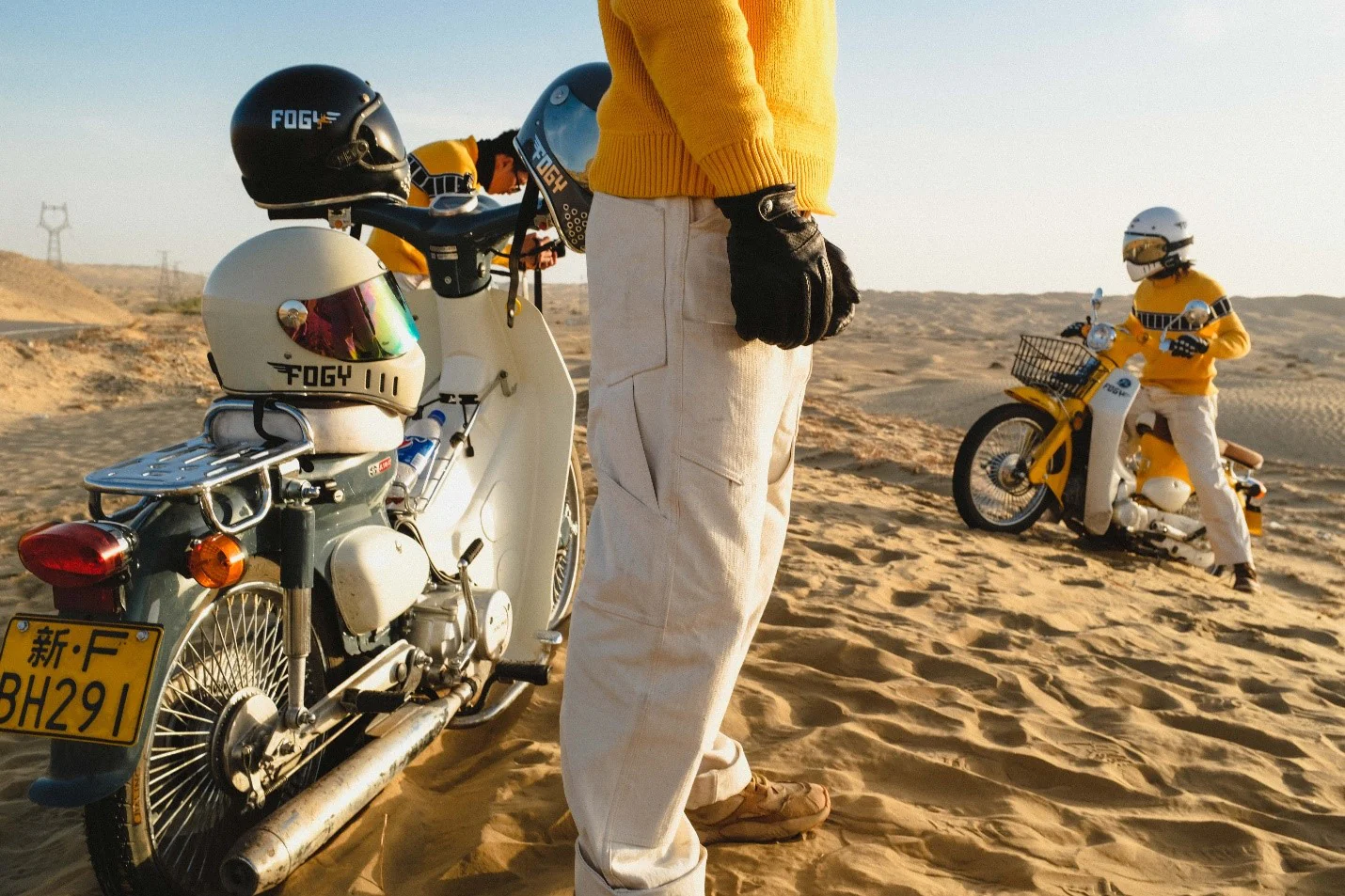Mar 13, 2024
History of Motorcycle Apparel
History of Motorcycle Apparel: From Dusters to High-Tech Gear
The history of motorcycle apparel is a fascinating journey that reflects the evolution of motorcycles themselves. From the early days of rudimentary protection to the high-tech materials and safety features of today, motorcycle gear has constantly adapted to meet the needs of riders.
The Early Days: A Time of Limited Protection
In the late 19th and early 20th centuries, the first motorcycles were essentially bicycles with motorized engines. Riders wore whatever clothing they had available, often consisting of tweed jackets, jodhpurs (riding breeches), and flat caps. These early outfits offered little to no protection in the event of a crash.
However, as motorcycles became faster and more powerful, the need for proper safety gear became increasingly evident. Early adopters began to adapt clothing from other activities, such as military surplus and equestrian wear. Duster coats, originally used by cowboys to protect themselves from dust, were adopted by some motorcyclists, though their loose fit posed safety hazards and could get tangled in the motorcycle’s controls.
The Rise of the Leather Jacket: A Symbol of Rebellion
The 1920s and 1930s saw a significant shift in motorcycle apparel. The iconic leather jacket emerged as the preferred choice for many riders. This was partly due to the growing popularity of motorcycle racing, where leather offered superior abrasion resistance in case of a fall. Leather jackets also became associated with a sense of rebellion and freedom, appealing to a new generation of motorcycle enthusiasts.
One of the most significant contributions to the history of motorcycle apparel came from Irving Schott in 1928. He created the first commercially available leather jacket specifically designed for motorcyclists, the Perfecto. This jacket featured a diagonal zipper closure, multiple pockets, and a belted waist, all of which became standard features in motorcycle jackets for decades to come.
World War II and the Impact on Motorcycle Gear
World War II had a significant impact on the development of motorcycle apparel. Military surplus clothing, such as bomber jackets and motorcycle boots, became readily available to civilians after the war. These items offered improved protection compared to pre-war options, and many motorcyclists incorporated them into their riding gear.
Additionally, advancements in materials science during the war trickled down to the motorcycle apparel industry. Nylon, a new synthetic material, began to be used in motorcycle jackets and pants, offering a lighter and more water-resistant alternative to leather.
The Post-War Era: Focus on Safety and Comfort
The post-war era saw a renewed focus on safety in motorcycle apparel. Manufacturers began to develop helmets with improved impact protection. Full-face helmets, initially used primarily by racers, gradually gained popularity among recreational riders.
Furthermore, the invention of Velcro in the 1950s revolutionized motorcycle apparel. Velcro closures offered a more secure and convenient alternative to traditional buttons and zippers.
By the 1960s and 1970s, motorcycle touring became increasingly popular. Motorcycle apparel companies responded by developing jackets and pants with features specifically designed for long-distance rides. These features included improved ventilation, additional storage compartments, and waterproof materials.
Modern Motorcycle Apparel: A Blend of Technology and Style
Today’s motorcycle apparel goes beyond mere protection; it seamlessly blends cutting-edge technology with stylish designs to cater to every rider’s needs and preferences. Let’s delve deeper into the innovative features that define modern motorcycle gear:
Advanced Materials:
-
-
Kevlar: This aramid fiber is renowned for its incredible strength-to-weight ratio. Kevlar linings in jackets and pants offer exceptional abrasion resistance, minimizing injuries during a slide.
-
Dyneema: Another high-performance synthetic fiber, Dyneema is known for its exceptional tear and puncture resistance. It’s often used in strategically placed areas like elbows, knees, and shoulders for added protection.
-
Mesh: Modern mesh technology allows for superior airflow and breathability, making it ideal for hot weather riding. Jackets and pants constructed with advanced mesh fabrics keep riders cool and comfortable on long summer journeys.
-
Impact Protection:
-
Gone are the bulky, uncomfortable armor pads of the past. Modern motorcycle apparel incorporates sleek, anatomically designed armor made from materials like high-density foam or plastic. This armor is strategically placed at key impact zones like shoulders, elbows, back, and knees for optimal protection without sacrificing comfort.
High-Visibility Features:
-
Safety remains paramount, and modern motorcycle apparel prioritizes rider visibility. Reflective materials strategically placed on jackets and pants enhance a rider’s presence on the road, especially during low-light conditions. Additionally, some manufacturers offer high-visibility jackets and pants in bright colors like fluorescent yellow or orange for added daytime visibility.
Tech Integration:
-
Motorcycle apparel is embracing technological advancements to enhance the riding experience. Here are some examples:
-
Bluetooth Communication Systems: Helmets with integrated Bluetooth allow riders to connect to their smartphones or GPS devices for hands-free communication and navigation.
-
Heated Gear: Electrically heated jackets, gloves, and socks provide warmth in cold weather, making long rides more comfortable.
-
Smart Helmets: These innovative helmets are equipped with features like heads-up displays, automatic emergency call systems, and even noise cancellation technology.
-
Style Meets Safety: Options for Every Rider
Modern motorcycle apparel doesn’t compromise style for safety. Here’s a glimpse into the variety available:
-
Sportbike Gear: Designed for an aggressive riding position, sportbike jackets and pants are aerodynamic and form-fitting. They often come in bold colors and graphics, reflecting the high-performance nature of sportbikes.
-
Touring Gear: For long-distance comfort, touring jackets and pants prioritize functionality with features like ample storage pockets, ventilation panels, and waterproof membranes. They typically come in neutral colors for versatility.
-
Adventure Touring Gear: For off-road enthusiasts, adventure touring jackets and pants offer a blend of on-road protection and off-road functionality. They’re constructed with a more rugged and weatherproof design, featuring removable armor and waterproof membranes.
-
Cafe Racer Style: Evoking a vintage aesthetic, cafe racer jackets are typically crafted from leather and feature a shorter cut and diagonal zipper closure. They offer a stylish option for riders who enjoy a more relaxed riding posture.
-
Urban Riding Gear: For city commutes, urban motorcycle apparel prioritizes practicality and comfort. Textile jackets and pants with a focus on weatherproofing and everyday wearability are popular choices for urban riders.
Conclusion: Geared Up for the Future
Modern motorcycle apparel is a culmination of technological advancements, safety innovations, and stylish designs. With the right gear, riders can conquer the open road with confidence, comfort, and a touch of personal style. As technology continues to evolve, we can expect even more exciting developments in motorcycle apparel, ensuring a safe and enjoyable riding experience for future generations.
The Legacy of Motorcycle Apparel: A Continuous Evolution
The history of motorcycle apparel is a testament to the ingenuity and dedication of manufacturers who have constantly strived to improve safety and comfort for riders. From the rudimentary protection of the early days to the high-tech gear of today, motorcycle apparel has played a crucial role in making motorcycling a safer and more enjoyable experience.
As technology continues to evolve, we can expect to see even more advancements in motorcycle apparel in the years to come. However, one thing remains constant: the commitment to ensuring that riders can explore the open road with confidence and style.
More Details